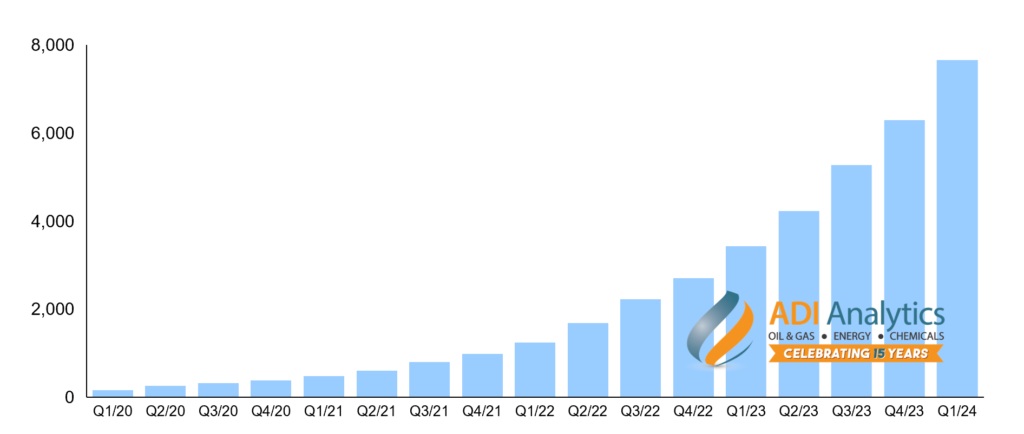
The Voluntary Carbon Market (VCM) is at a crossroads as we have written in our prior blogs (see part 1 and part 2). While the U.S. VCM Guidelines offer a promising path forward, significant work remains to ensure the market fulfills its potential in combating climate change. This part explores some key developments that can pave the way for a more robust and impactful VCM.
Standardized labels: The power of transparency
One crucial step towards a more robust VCM is the introduction of standardized labels for carbon credits. These labels would clearly differentiate high-integrity credits from those with less rigorous verification processes. A prime example is the Core Carbon Principles (CCP), a set of principles developed by a leading industry consortium that aims to ensure environmental integrity, social responsibility, and sustainable development benefits in carbon offset projects.
Standardized labels like CCP can tie pricing to differentiation based on quality and empower buyers to make informed choices when purchasing offsets. By allowing buyers to easily identify high-quality credits, these labels can incentivize project developers to invest in robust methodologies and verification processes. This not only fosters trust in the market but also channels investment towards projects that deliver the greatest environmental impact.
The evolving stance of SBTi: A potential game changer
The Science Based Targets initiative (SBTi) plays a critical role in driving corporate emissions reduction efforts. SBTi helps companies establish science-based targets aligned with the goals of the Paris Agreement, which aims to limit global warming to well below 2 degrees Celsius, preferably to 1.5 degrees Celsius, compared to pre-industrial levels.

Currently, SBTi primarily focuses on companies setting ambitious emissions reduction targets within their operations (Scope 1 & 2 emissions). However, discussions are ongoing regarding the potential for limited use of high-quality offsets for Scope 3 emissions, which encompass a company’s indirect emissions from its supply chain and other activities. Scope 3 emissions often represent a significant portion of a company’s overall carbon footprint.
If SBTi allows for the inclusion of high-quality offsets for Scope 3 emissions, it could significantly increase demand for credible carbon credits within the VCM. This would provide a major boost to the market and incentivize project developers to focus on delivering high-impact emissions reductions.
Convergence with compliance markets: a rising tide lifts all boats
Compliance carbon markets are established by governments and mandate companies in specific sectors to reduce their emissions by purchasing carbon credits. These markets have been growing globally, and there’s an increasing overlap with the VCM. For instance, some compliance markets allow companies to use a combination of internal emissions reductions and offsets to meet their compliance obligations.
This convergence between compliance and voluntary markets offers several advantages. Firstly, it can help to legitimize the VCM by establishing a more robust price discovery mechanism for carbon credits. As compliance markets grow, the overall demand for carbon credits rises, which can influence pricing in the voluntary market. This can provide more certainty to project developers and investors in the VCM.
Secondly, the growing overlap between compliance and voluntary markets can lead to the development of more harmonized standards and methodologies for carbon accounting. This consistency can streamline the process for project developers seeking to sell credits in both markets, further boosting the efficiency of the VCM.
The road ahead: Collaboration is key
The VCM’s future hinges on overcoming current challenges and capitalizing on the potential of these catalysts. Increased standardization, transparency, and robust verification processes are crucial for building trust and attracting investment. Additionally, collaboration between governments, businesses, and NGOs will be essential to ensure the VCM plays a vital role in accelerating global decarbonization efforts.
Governments can play a critical role by establishing clear policy frameworks that support the growth of the VCM. This includes providing guidance on the use of offsets in corporate climate strategies and endorsing robust standards for project development and verification. Businesses can contribute by setting ambitious emissions reduction targets and strategically utilizing high-quality carbon offsets to address their residual emissions. Finally, voluntary groups can play a vital role in raising awareness about the VCM, promoting best practices, and ensuring that the market delivers on its environmental promises.
By working together, stakeholders can usher in the next-generation VCM that is transparent, credible, and impactful. This enhanced VCM can play a critical role in mobilizing vital private capital towards emissions reduction projects around the world, propelling us towards a more sustainable future.
— Uday Turaga
Please contact ADI at info@adi-analytics.com if you would like to understand how to leverage carbon markets for your energy transition and decarbonization strategies or learn more about subscribing to our multi-client study on natural climate solutions.
ADI Analytics is a prestigious, boutique consulting firm specializing in oil & gas, energy transition, and chemicals since 2009. We bring deep, first-rate expertise in these segments including voluntary and compliance carbon markets and carbon dioxide removal, where we support Fortune 500, mid-sized and early-stage companies, and investors with consulting services, research reports, and data and analytics, with the goal of delivering actionable outcomes to help our clients achieve tangible results.
We also host the ADI Forum, one of Houston’s distinguished industry conferences, to bring c-suite executives from oil & gas, energy transition, and chemicals together for meaningful dialogue and strategic insights across the value chains.
Subscribe to our newsletter or contact us to learn more.



















